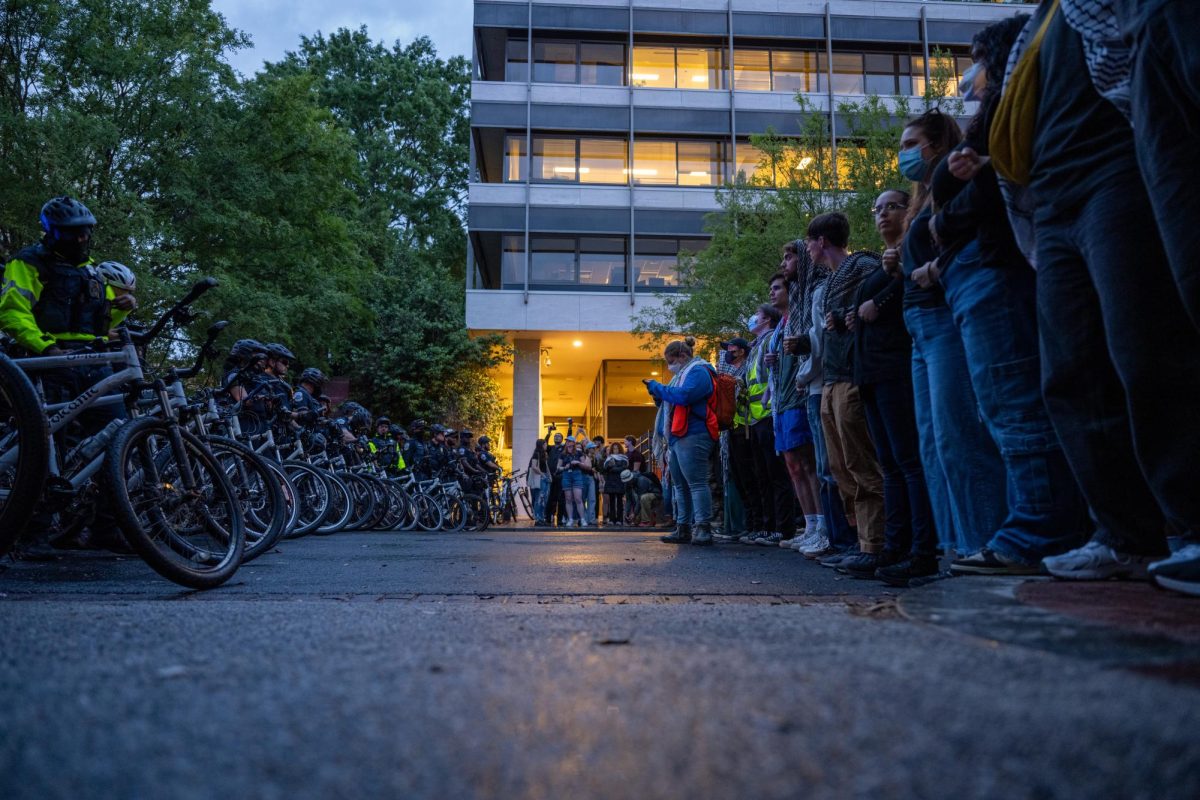Fundraising at any university largely depends on the monetary contributions of its alumni. When GW shows its students that it can adequately address their concerns, the school creates a positive relationship as they become alumni and fosters a revenue source that is self-sustaining. But when universities fail to do this, a vicious cycle can be created.
When schools struggle to fundraise from their own alumni, they often opt to hire outside consulting groups. By doing this, they use money that could be better spent addressing current students’ needs and concerns. Instead, the University should put the money it is giving to outside fundraising services to immediately improve the student experience. That could then lead to more satisfied students and increase the likelihood of future alumni donations. An analysis of GW’s tax documents compared with those of other universities show that it outspends many of its peer institutions on outside fundraising services – but still raises less than the majority of its peer schools. As a result, students rightfully understand that GW is spending wastefully and that their needs are being overlooked in the short term.
[gwh_image id=”1048059″ credit=”Hatchet File Photo: Nate Muramatsu” align=”right” size=”embedded-img”][/gwh_image]
Instead of pursuing this unsuccessful pattern, GW should reallocate money spent on outside fundraising services to address pressing concerns.
GW, which has an alumni giving rate of 6.8 percent, spent $600,000 on outside fundraising services in 2016 and raised more than $95 million in total fundraising. By contrast, Boston University – with an alumni giving rate of 10 percent – spent $150,000 and raised $400 million. The alumni giving rate is indicative of how strong a university’s ties are with its alumni. But fostering those relationships begins when alumni are still students.
If the University wants to receive regular donations from its alumni, it must work to address the needs of its current students. Often, alumni don’t donate when they feel that the University didn’t do enough to address their concerns while they were students. If GW paid better attention to students’ needs and made life at the University more financially worthwhile, then high spending on outside fundraising services wouldn’t be necessary.
The point of fundraising campaigns is to generate money to increase student satisfaction and make bigger improvements down the road. However, students’ needs often go ignored in the financial process as GW searches for the quickest way to meet fundraising goals. The University hires outside consulting groups to generate money right away. However, directly investing in students instead is, in fact, a long-term solution. It would broaden GW’s alumni network and dramatically cut costs in the future.
Specifically, administrators should start by focusing on the needs of graduate students who have said that they don’t receive enough money to afford food daily. Issues that affect graduate students are often overlooked in discussions of student life on campus. GW could use a portion of the $600,000 it spends annually on outside fundraising services to address food insecurity among its graduate students. While administrators celebrated meeting their $1 billion fundraising benchmark last year, some graduate students skipped meals because their $25,000 a-year teaching assistant salary wasn’t enough. While GW will increase the allotment for the undergraduate dining plan next academic year, graduate students at the University are still in need of a meal plan or solution that addresses their needs. A teaching assistant’s salary breaks down to $3 or $4 a day for food, which doesn’t cover one meal on campus. However, because graduate students often live off campus, the University often overlooks their needs to focus on the undergraduate student body.
At Boston University, an institution that spends far less on fundraising services than GW, residence dining rooms exist with meal plans that are available to all students at a lower rate than GW. On Foggy Bottom, students are forced to eat out every day or buy their own groceries and cook in a kitchen, if they have access to one. A meal plan tailored to graduate students’ teaching assistant salaries would make eating on campus more affordable and would help resolve student food insecurity. Some grad students are even pushing for unionization to renegotiate pay, financial aid and even health insurance. With 70 percent of GW’s financial aid pool going to undergraduate students, graduate students are left with few options for reducing the cost of attending GW or paying for meals on campus. This is just one way that money could be used more effectively.
Ideally, universities that spend on outside consulting groups do so with the goal of generating money to be spent on its students. Fundraising is essential at any institution to attract investors and create amenities. It’s not an inherently bad thing, but using outside sources that don’t justify the means hurts everyone. GW needs to remember that the goal of fundraising should be to create a better student experience. The burden is on the University to ensure that students live comfortably so they can focus on their college experience – and it should do that by reallocating part of the money currently spent on outside consulting to address issues on campus today.
Nate Muramatsu, a junior majoring in international affairs, is a Hatchet columnist.
Want to respond to this piece? Submit a letter to the editor.


